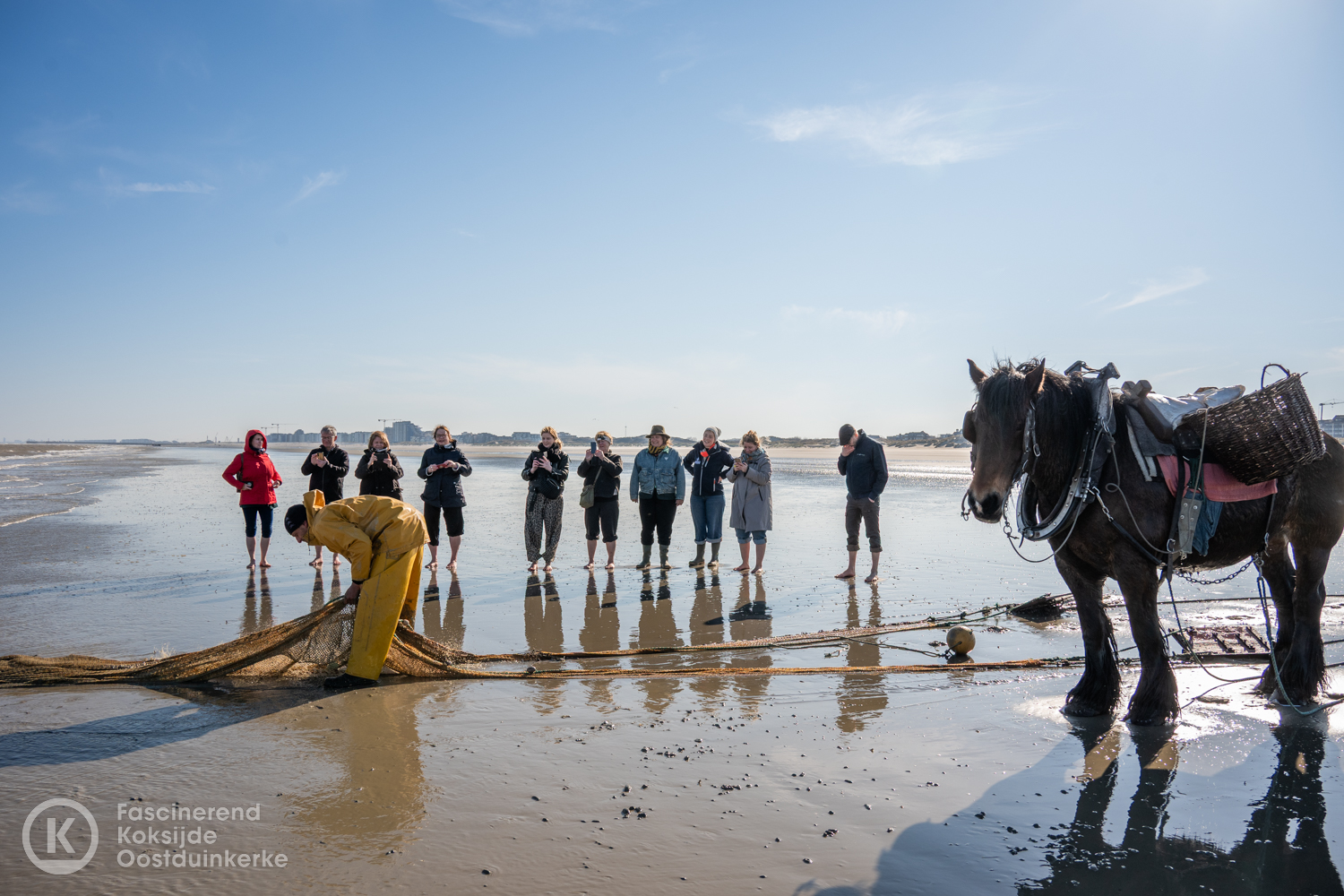Oostduinkerke
Fishing Museum Navigo
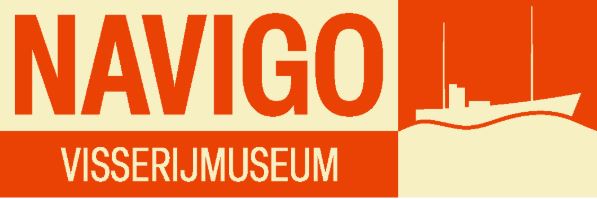
The Fishing Museum Navigo presents the region’s fishing heritage and contemporary life, featuring several special exhibition themes: large catches from World War II, 12-year-old boys risking their lives as Icelandic seamen, the sometimes tough and lonely lives of fisherwomen – but also driftwood finds on the shores and today’s challenges in fishing. Of course, the museum also showcases Valentijn, the sperm whale and Navigo’s new eye-catcher.
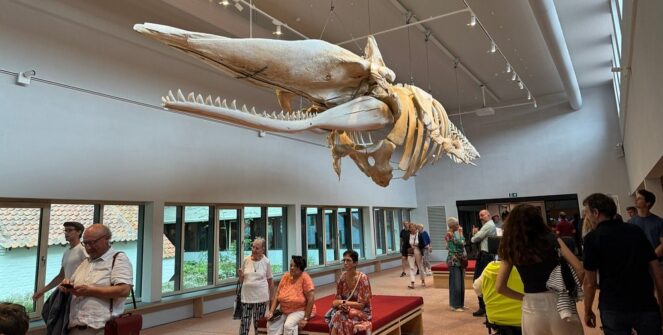
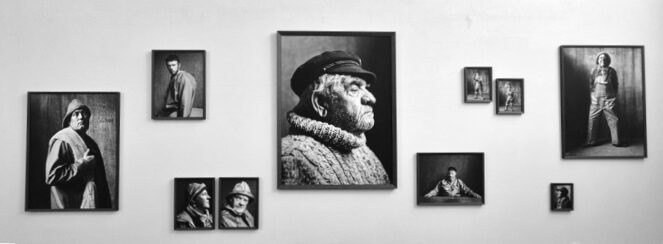
On the very first day, we met the museum director Jadrana Demoen and the museum’s scientific work coordinator Ruth Pirlet. The Fishing Museum Navigo shares similarities with the Museum of Torne Valley in coordinating the UNESCO site, so meetings with the museum staff, tradition practitioners, and the city’s mayor, Sander Loones, were the main highlights and objectives of our trip to Belgium.
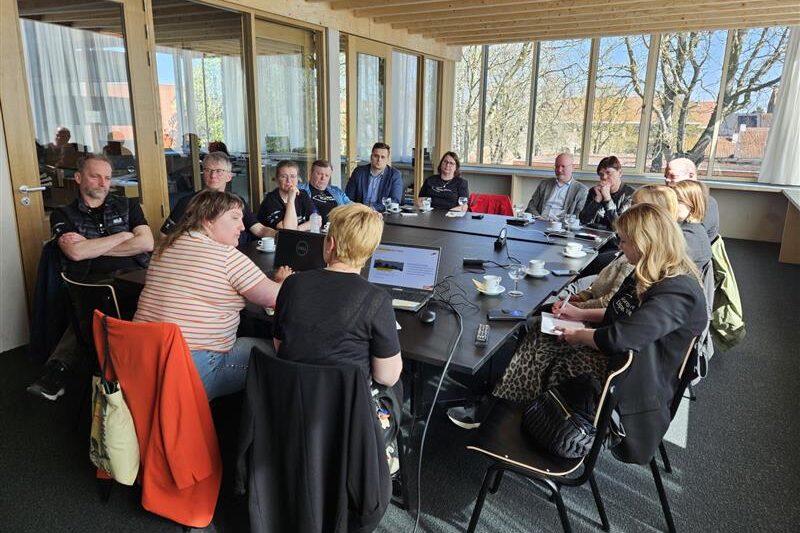
The museum was founded in 1976. It underwent a complete renovation between 2004 and 2009, and now also has a completely new building connected to the original renovated part. The museum reopened to the public in 2024. Visitors can also, by arrangement, explore the collection storage rooms, as the meeting rooms are built above them behind a glass wall.
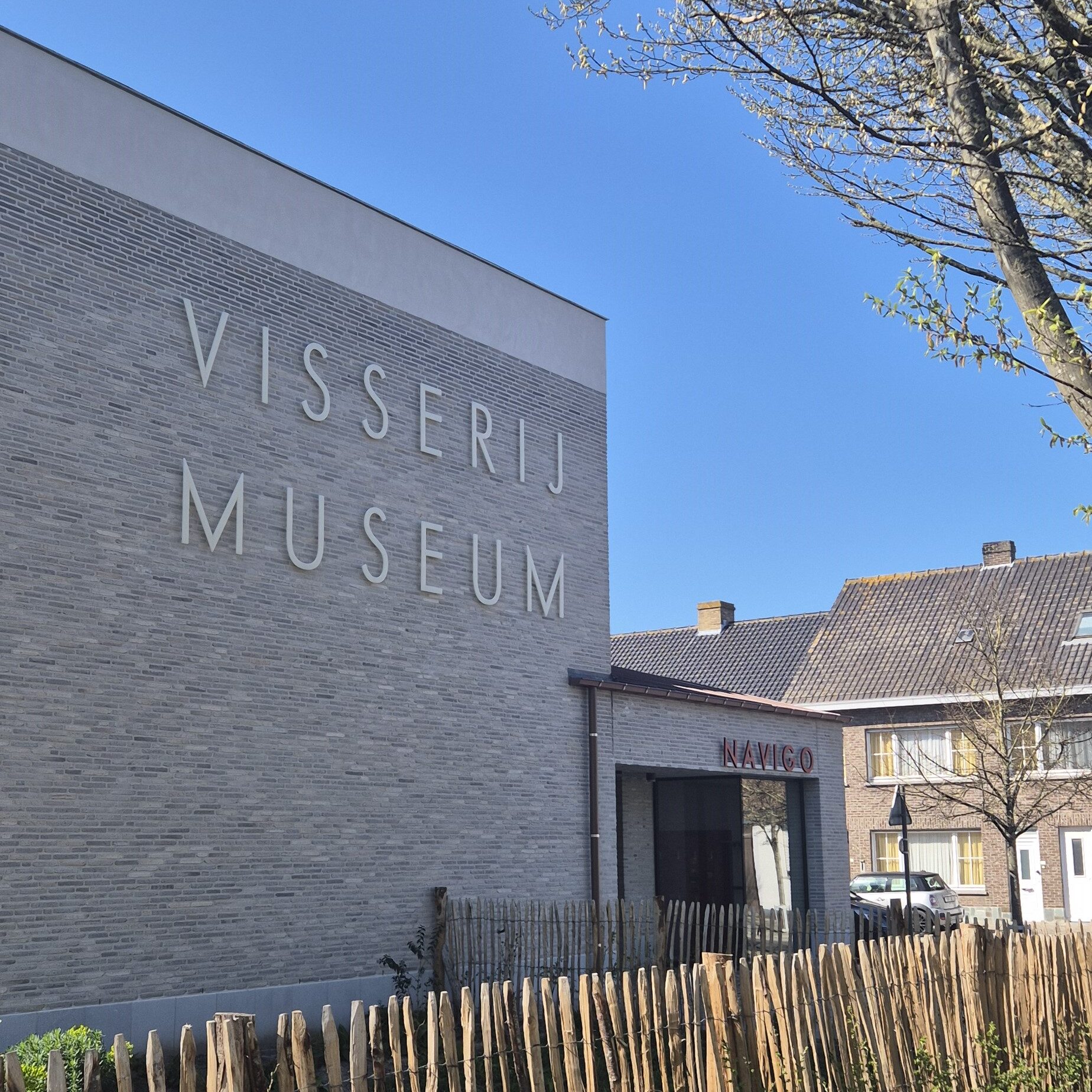
What did we learn?
Safeguarding Committee: Safeguarding traditions requires active involvement from various stakeholders. In Oostduinkerke’s shrimp fishing, this includes the Navigo Museum, the city’s tourism and communications department, the city administration, and the tradition practitioners themselves. Since 2013, Oostduinkerke has had a “safeguarding committee” that meets at least once a year to discuss current issues and necessary actions for tradition preservation. A similar network-based and systematic management model could be effective for protecting the dipnet fishing tradition as well.
Training Program: To attract new tradition practitioners, an open “training program” has been developed. This two-year program combines a theoretical part led by the museum and a practical part coordinated by tradition practitioners. Upon completion, participants are qualified to work as shrimp fishers. The program has helped maintain the desired number of practitioners. Oostduinkerke’s training model also provided valuable insights for developing the planned “dipnet license” during the project.
Shrimp Fishing on Horseback in Oostduinkerke
In 2005, tradition practitioners had the idea to apply for inclusion on UNESCO’s Intangible Cultural Heritage list. This marked the beginning of a collaborative journey with the Koksijde municipality officials and the museum. The tradition was listed on the Belgian national list for the Flanders region in 2009, and between 2012 and 2013, the UNESCO application was prepared. At that time, 12 tradition bearers and their families, known as the honorary shrimp fishers, local public officials from Oostduinkerke (Koksijde), the tourism department, “De Koninklijke Orde van de Paardenvisser” (the local heritage association), and the Fishing Museum Navigo were involved in the preparation. Towards the end of the application process, the Flemish Ministry of Culture (similar to the Finnish Heritage Agency) and heritage experts from the Flemish Center for Cultural Heritage (FARO), the Academic Centre for Agrarian History (CAG), and WIE – Workplace Intangible Heritage also participated. The application was submitted in 2013 and approved by the end of the same year, securing its place on the UNESCO list.
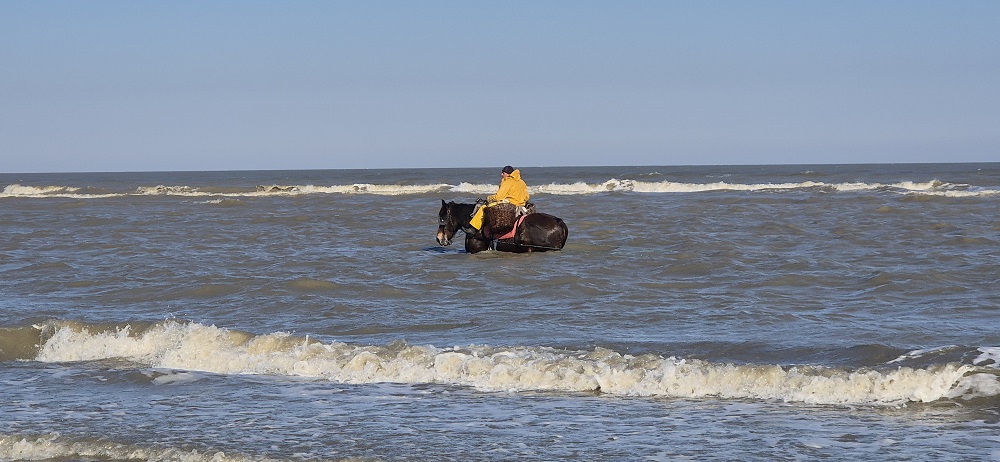
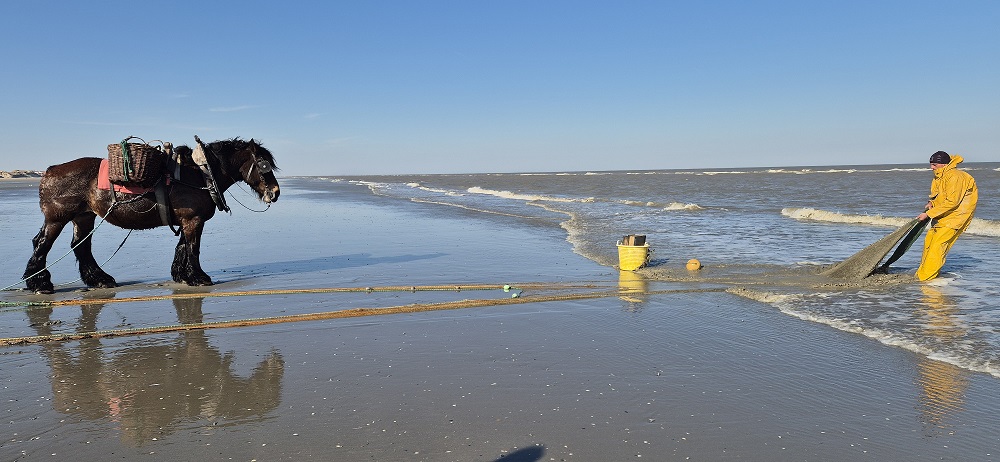
The journey towards this recognition, however, began much earlier, right after World War II, when the local mayor realized the connection between cultural heritage and tourism. The earliest records of horseback shrimp fishing date back to archival documents from the 1600s. By the 1950s, only three shrimp fishers using horses remained. Despite their small number, they were immediately surrounded by dozens of tourists during the summer season, all eager to witness a unique event not seen anywhere else. It was at this time that the local mayor, Honoré Loones, recognized the tourism potential of the tradition.

Local Government in 1950:
“Since Oostduinkerke is just about the only coastal municipality where beach fishing still exists, it is only logical that we should use the shrimp fishermen on horseback as cultural ambassadors, an attraction for our coastal town. We should organize an annual Shrimp festival, where the shrimp fisherman on horseback take center stage (…). After a few years, this will become a beautiful tradition and will contribute to making the name of Oostduinkerke familiar throughout Belgium. Anyone who would see a shrimp fisherman depicted in our country, on a poster or a postcard, would immediately think of Oostduinkerke. What ideal publicity! And at the same time, our city council would help to maintain a wonderful and ancient tradition that is in danger of being lost.”
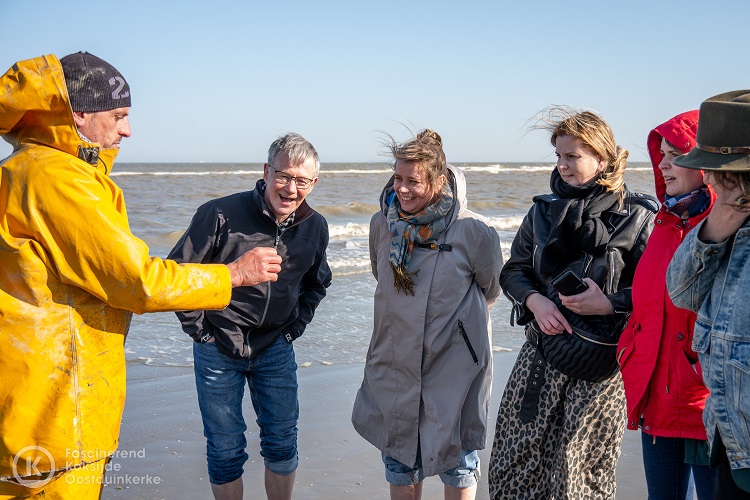
At that time, it was decided to refer to these tradition practitioners as cultural ambassadors. Around the same time, it was also decided to provide them with a small financial support when they performed demonstrations for hundreds of tourists — not when they fished for shrimp in their own time, but during events and shows. In 1974, the Fishing Museum NAVIGO was established, with its main focus on telling the story of the shrimp fishers on horseback. Even today, the current mayor, Sander Loones — the grandson of Honoré Loones — has committed to continuing support for the tradition practitioners, both during shows and by assisting with insurance and logistics related to horse care.
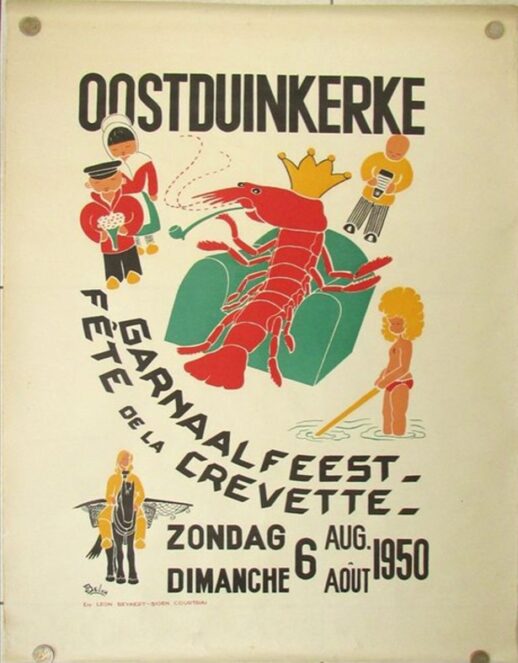
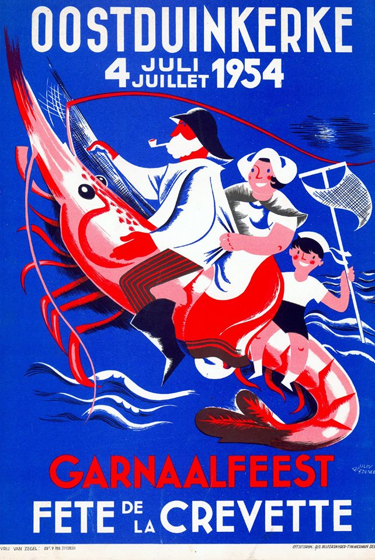
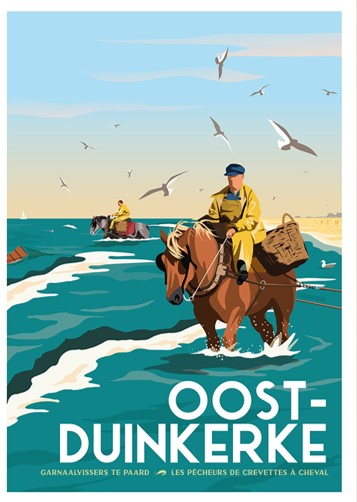
What did we learn?
Shared Threats: We learned that the factors threatening shrimp fishing and dipnet fishing traditions are largely the same. For both traditions, catch volumes have been declining for years, due in part to pollution and climate change (such as rising water temperatures).
UNESCO Recognition: The UNESCO designation has increased interest in the tradition and its practice. It is particularly encouraging that more women have become involved as tradition practitioners. Oostduinkerke now has 15 practitioners, which is considered a suitable and sustainable number. Similarly, the dipnet fishing tradition has been able to attract more women, so both traditions are moving in a similar direction. Another lesson is that an ever-increasing number of practitioners is not necessarily sustainable; it is best to maintain a stable and balanced base.
Experiencing Tradition Without Active Participation: We also learned that the tradition can be experienced in a meaningful and impactful way without active participation. It is not an absolute necessity for dipnet fishing to be opened up for anyone to try. Safety concerns come into play here, as ensuring visitor safety is of utmost importance.
Het Trekpaard – Horse Training Center
The main working partners of the tradition practitioners are Brabant draft horses. These horses are trained for their tasks over several years, and the municipality contributes to the maintenance costs and insurance. Oostduinkerke has a horse training center — a large stable with an attached restaurant-bar — maintained by the tradition practitioners.
In addition to running the training center, Katrien Terry and her family operate a program services company at the site, offering visitors guided tours of the stables and organizing other activities, such as horse-drawn carriage rides.
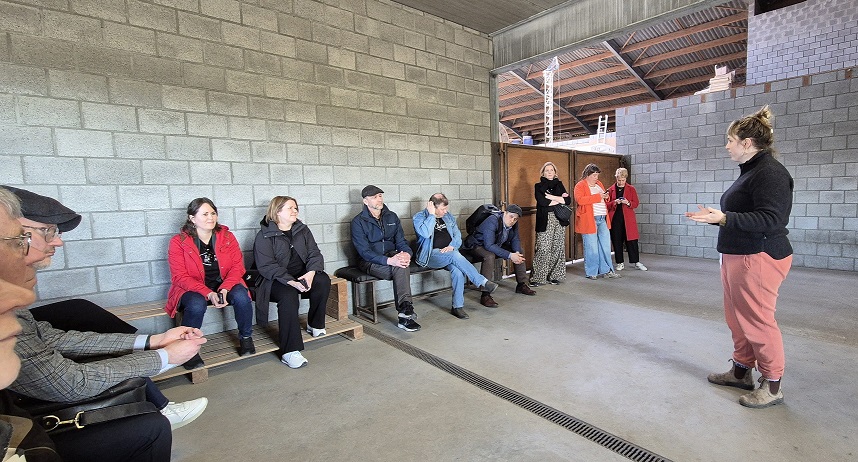
Katrien Terry guided our group in recognizing various marks on the horses that reveal their characteristics, age, and breeds. One of the most important considerations regarding shrimp fishing and visitors is safety, as horses weigh hundreds of kilos and are herd and flight animals, meaning they may suddenly flee in unpredictable directions if startled. Therefore, it is essential that tourists and visitors avoid causing situations that could result in accidents or other hazards.
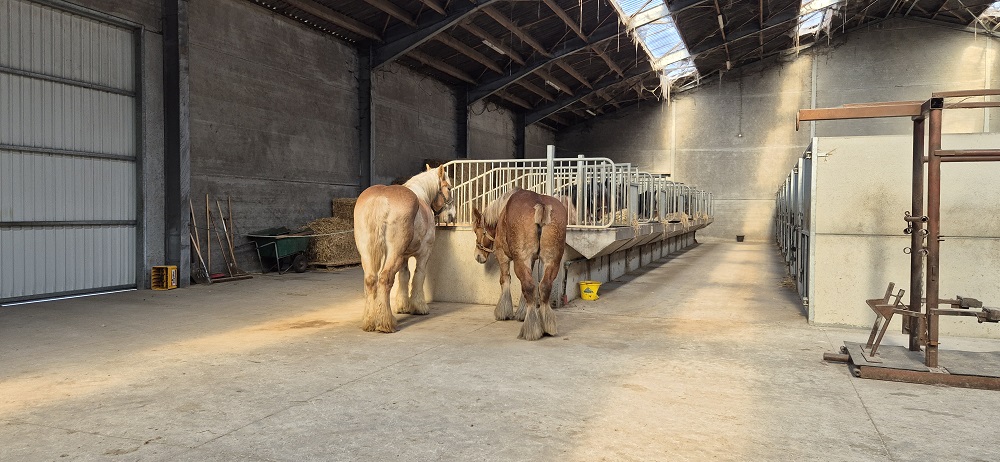
The restaurant attached to the training center served a local traditional delicacy — the shrimp croquette, or in Flemish, garnaalkroket. It is a crispy fried croquette with a rich, silky béchamel-based filling full of small gray North Sea shrimp. This dish is one of Belgium’s classic seafood specialties and is often served as a starter, accompanied by lemon, fried parsley, and sometimes crispy bread or a green salad.
What did we learn?
The tradition is full of details that may seem minor to outsiders but are essential for the overall coherence and functionality. Examples include the length of the Brabant horses’ tails, their coloring, and their massive size. Dipnet fishing also involves its own fine-tuning, such as in the construction of dipnet equipment and the platform (the wooden frame used in the fishing).
Practicing the tradition as a livelihood: We had the opportunity to meet a passionate professional storyteller! Our visit to Het Trekpaard also showed that practicing the tradition can be a profession. Visitors come to the site to enjoy a genuine and memorable experience with the horses, various related activities, and culinary delights. This was especially encouraging and inspiring, and aligns well with sustainable tourism. Hopefully, through our project, we can help support the storytelling and potential productization of the dipnet fishing tradition.
Meeting with the Mayor and Tourism Manager of Koksijde
The second day of our study trip began with a breakfast meeting in Oostduinkerke, where we met Koksijde’s mayor, Sander Loones, and tourism manager, Mieke Ghesquiére. The meeting was arranged right next to the several-kilometer-long fine sandy beach.
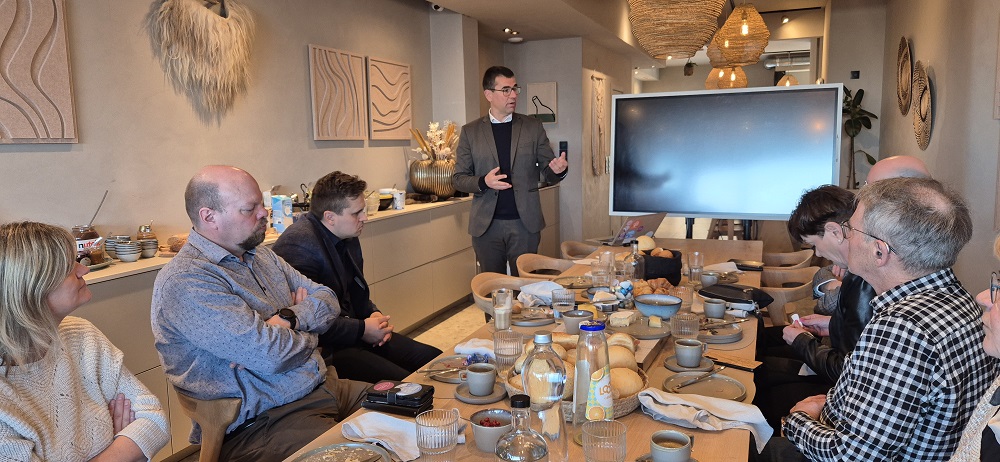
Mayor Loones shared the history of the shrimp fishing tradition and its impact on the identity of Oostduinkerke as a whole. We also had a chance to discuss with Mieke Ghesquiére, who spoke about the development of tourism in the area.
Koksijden is especially popular among domestic tourists, with as many as 86% of visitors being Belgian. The area has many holiday homes, which fill up particularly during the high season. The most important season is summer, when the three-kilometer-long fine sandy beach attracts visitors, as does the shrimp fishing tradition, which is a very popular attraction.
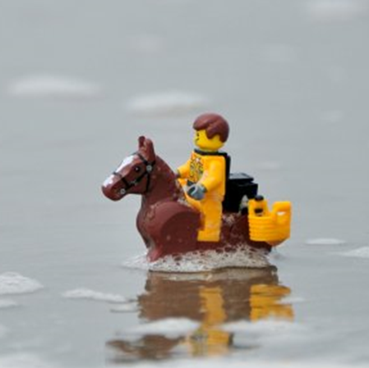
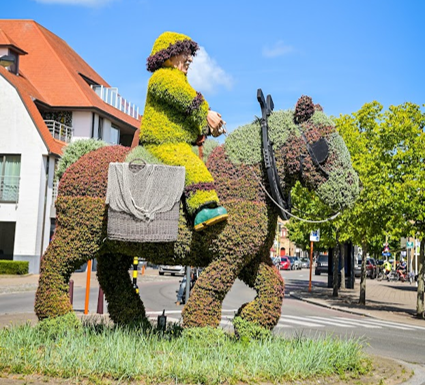
Tourism development in the area is managed by a municipal organization. During the summer season, in addition to a year-round open tourist office, there are two information points in Koksijden and Oostduinkerke serving visitors every day of the week. The tourism organization is also responsible for marketing the area and promoting the horse-mounted shrimp fishing as a tourist attraction.
The city commissions performances from the tradition practitioners from April to October (about 40 shows during the season, with emphasis on July and August), and the schedules are published well in advance on the tourism website. Each show lasts about 45 minutes and participation is free for visitors. Visitors can watch the fishing from the shore but are not allowed to participate themselves.
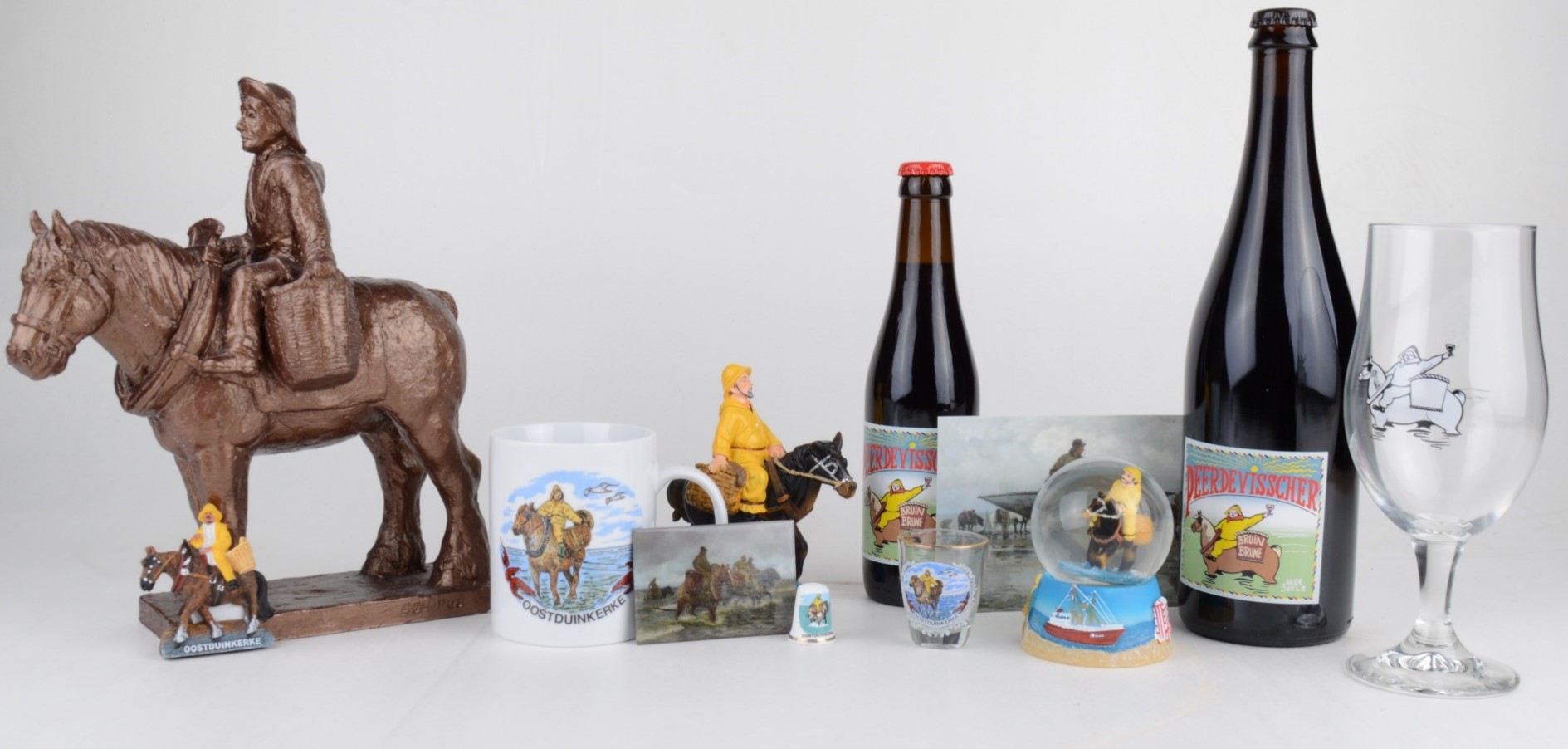
Participation in the shows is voluntary for the fishers. They receive a one-time compensation, the amount of which is based on a pre-determined calculation formula. Costs related to horse maintenance especially influence the compensation amount.
During our discussion, Mieke Ghesquiére highlighted the challenge of managing large visitor numbers and ensuring the safety of all participants. Tourists do not always understand that the fishers need enough space and that it is not allowed to approach the large horses too closely. There have been dangerous situations, so special attention has been paid to this issue.
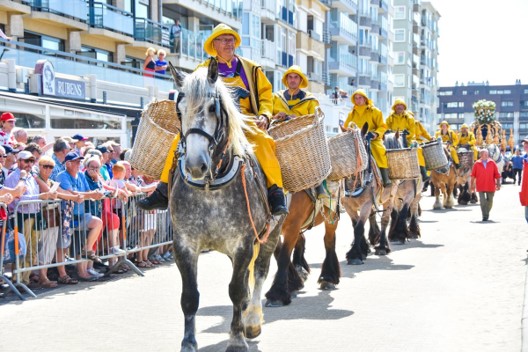
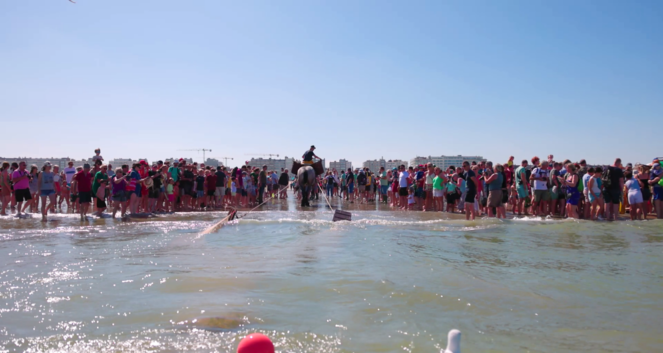
What did we learn?
“Keeping tradition alive is not about preserving the ashes but celebrating the fire!”
Sander Loones, Koksijde-Oostduinkerken pormestari
In safeguarding traditions, one should not get stuck in the past but allow the tradition to live, evolve, and continue to inspire.
Sustainable tourism: The UNESCO designation has also influenced tourism growth and the emergence of various events in the area. Their biggest challenge is enabling a safe experience of the tradition amidst the large number of visitors during the high season. Similarly, along the Torne River, sustainable tourism issues and goals are being considered at the threshold of a possible UNESCO listing.
City commitment: The city is committed to protecting the tradition with clear financial and staffing resources. The tradition itself and its value are recognized and known internally within the city administration.
Tourism organization’s role: The tourism organization in Oostduinkerke has a clear role in supporting the tradition, backed by an operational budget. Their marketing efforts and the year-round tourist office with satellite information points ensure that visitors find the services they seek.
Tradition practitioner Günther Vanbleu and the horse Martha
We had the opportunity to witness a traditional shrimp fishing demonstration as practitioner Günther Vanbleu skillfully caught shrimp from the North Sea while riding the horse Martha. Shrimp fishing always takes place at low tide, so we walked a long stretch along the fine sandy beach to reach the waterline. The water was around six degrees Celsius, and the chilly wind made the conditions feel even colder. We watched Günther pull the catch ashore and carefully separate the shrimp from other fish and debris. Martha the horse stood patiently and calmly nearby.
The catch was further sorted and washed at a cooking shelter located in the yard of the Navigo Museum. The small shrimp were then boiled in salty seawater and soon ready to be tasted. The shrimp were fresh and flavorful, making for an unforgettable experience!
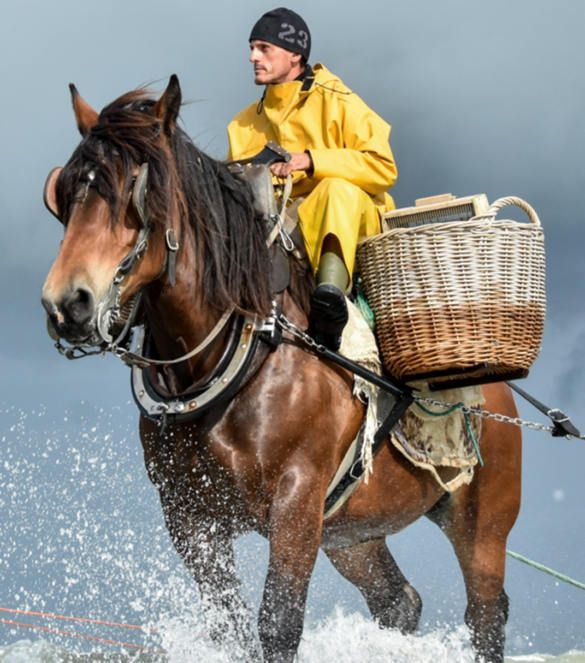
What did we learn?
Sustainable shrimp fishing: The shrimp are caught ethically and on a small scale, only as much as needed, giving the tradition a small carbon footprint. The catch provides a local delicacy enjoyed both by the practitioners and visitors.
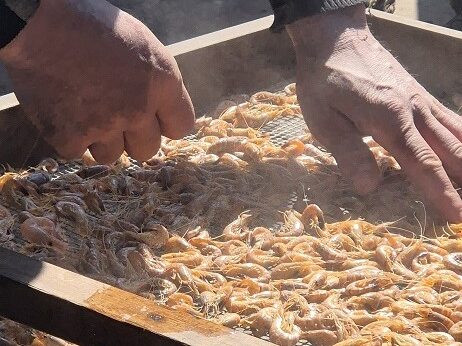
Unique visitor experience: Witnessing the entire process—from fishing to preparation and tasting—left a warm and lasting impression of the tradition. Cultural tourism is one of the strongest travel motivators worldwide, as people seek authentic, local experiences. Additionally, horse-drawn carts moving through the town add visibility and presence to the tradition in the urban landscape.
Brussels
The Embassy of Finland (Belgium and Luxembourg) and the Swedish Consulate
Our delegation’s first stop in Brussels was the Embassy of Finland to Belgium and Luxembourg, where we had the pleasure of meeting Ambassador Jouko Leinonen, Deputy Head of Mission Karim Aissa Baccouche, as well as Cultural Counselor David Ek and Communications Officer Inger Wahlstedt from the Swedish Consulate. It was an excellent opportunity to meet them all together, especially since our delegation included both Finnish and Swedish representatives as well as city officials.
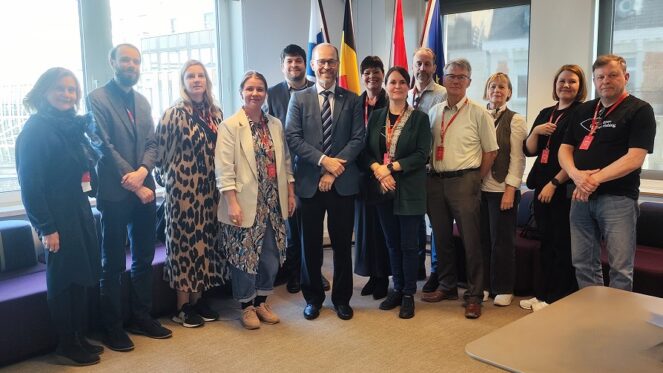
We had the chance to present the UNESCO nomination process, the TVDC project, and our reasons for being in Belgium on this study trip. To our delight, we discovered that Ambassador Leinonen hails from Pello, along the Torne river area, which led to warm and positive conversations — including some consideration of the Meänkieli language.
Belgian Brewers: The Brewers Guild House, Grande Place
Our Thursday morning began immersed in beer tradition, as we headed to the Belgian Brewers Guild premises located at the Grande Place — itself a UNESCO World Heritage site. The House of Belgian Brewers was built in 1698 and continues to serve its original purpose as a brewers’ house.
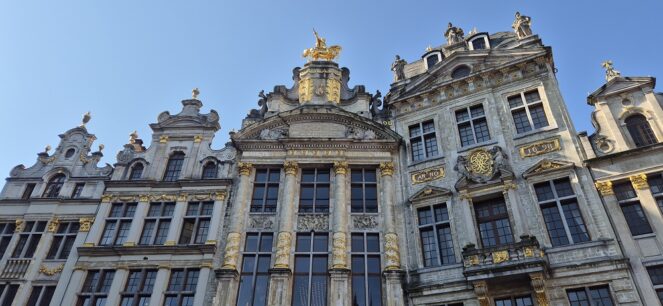
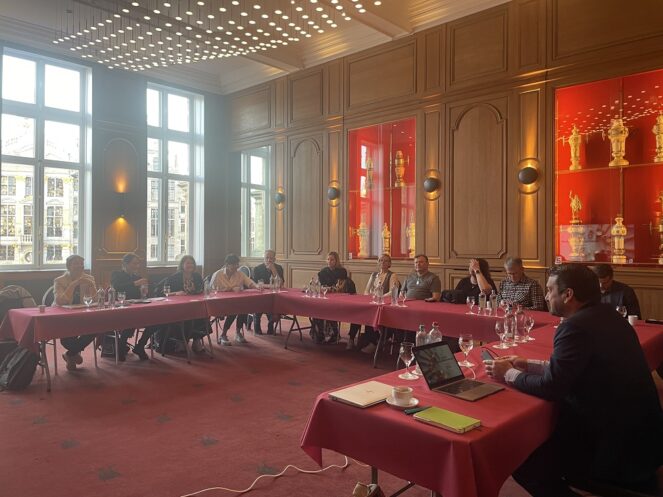
We were warmly welcomed by Krishan Maudgal, director of the Belgian Brewers Guild, and Chantal Bisschop, a cultural heritage expert from the Flanders region. Our group heard a comprehensive story about beer brewing, the unique characteristics of Belgian beer culture, the UNESCO nomination process, and the guild’s own beer museum, which attracts around 20,000 visitors annually. We also learned about the Belgian Beer World Experience exhibition in the Stock Exchange building (La Bourse), which drew as many as 110,000 visitors in its first year.

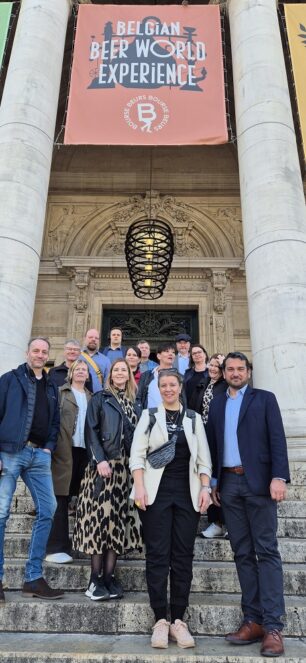
The Brewers Guild has notably focused on “heritage work” — opening up the culture of beer brewing to the public in a broad and deep way. It’s not merely about drinking beer, but about subtle and cultivated craftsmanship and taste skills. Belgian beer culture also includes related crafts beyond brewing itself: for example, each beer has its own specially designed glass, label, and coaster. Additionally, there is craftsmanship in making beer taps. Each element has its own enthusiasts and collectors. A new term we learned was the Greek-origin word zythology, meaning the study or science of beer.
“Beer is for Belgium what wine is for France”
Krishan Maudgal, Belgian Brewers, johtaja
Over the years, Belgian breweries have kept pace with technological advancements. Centuries of brewing experience, investments in necessary expertise and improved methods, as well as respect for both beer and nature, form the pillars of Belgium’s brewing industry. In 2023, Belgium had a total of 417 breweries (compared to about 120 in Finland).
In their UNESCO reporting, they emphasize the communities behind the beer tradition rather than the tangible elements such as the beer itself or related buildings — precisely the intent of intangible cultural heritage listing!
As a gift, we presented Krishan Maudgal with a bottle of Lapland Original Lager from Tornio Brewery, which won last year’s award for the best foreign lager.
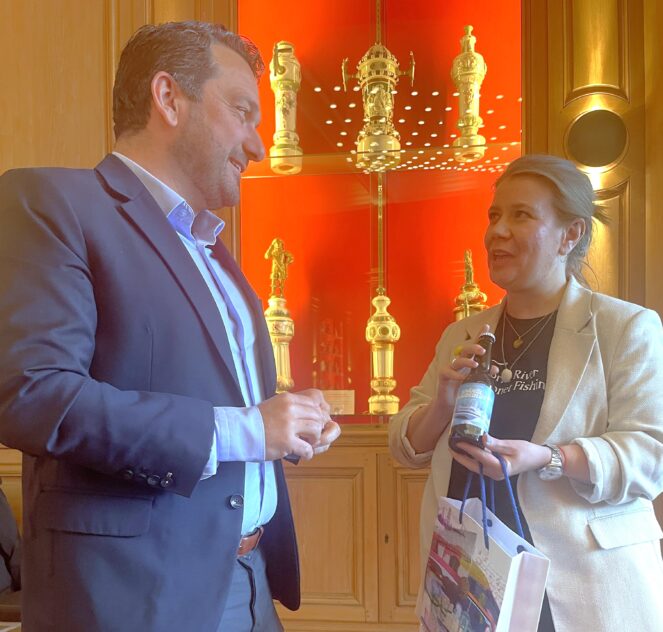
Photo: Chantal Bisschop
What did we learn?
Beer culture in Belgium is highly comprehensive and deeply embedded in the Belgian DNA.
The protection and practice of beer tradition happens extensively on both local and international levels.
The safeguarding of beer heritage was excellently visualized and made engaging for the audience.
Beer World Experience: La Bourse – The Brussels Stock Exchange Building
Opened in September 2023, the Beer World Experience is the world’s largest interactive beer cultural center, located in the fully renovated La Bourse building, Brussels’ former stock exchange. The center offers a multi-sensory, interactive journey through Belgium’s beer culture, from history to present day, unveiling the secrets of beer brewing.
Highlights included learning about the significance of beer culture to Belgium’s cultural heritage, exploring the mindset of a Belgian master brewer, and discovering how creativity and passion combine in beer production. We also learned what makes Belgian brewing unique compared to other traditions.
At the end of the exhibition, visitors can explore various beer types and enjoy stunning views of Brussels from The Beerlab rooftop terrace.
What did we learn?
The protected heritage building was skillfully repurposed with respect for its historical value.
The exhibition was impressive, engaging all senses through smell, taste, sight, and hands-on experiences.
Modern technologies were effectively used, including AI-driven personalized beer recommendations based on a short visitor survey.
The exhibition was stylish and highly immersive, making the beer culture come alive.
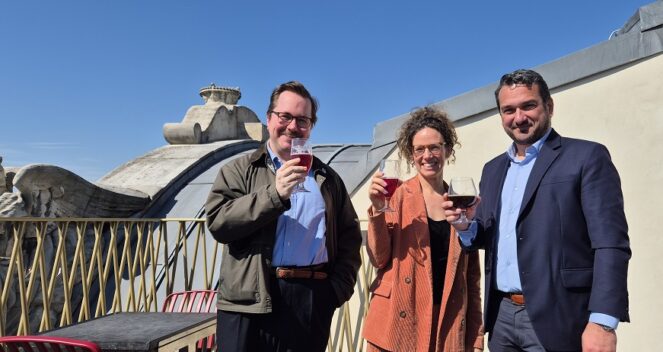
Photo: Museum of Torne Valley
Meeting at the Flemish Ministry of Culture – Vlaamse Overheid
We met with Arno Beunen, Coordinator for Flemish Culture, Youth and Media, and Chantal Bisschop, Cultural Heritage Expert of the Flemish Region, at the Vlaamse Overheid (Flemish Government) building.
We learned how Belgium’s government and cultural administration are organized. Belgium, with just under 12 million inhabitants, is divided into four administrative regions: Flanders, French-speaking Belgium, Brussels, and German-speaking Belgium. Regarding UNESCO nominations, each region has the opportunity to propose a candidate to the UNESCO lists once every eight years. This is a relatively long interval for a single tradition, though regions may relinquish their turn if they have no current candidates.
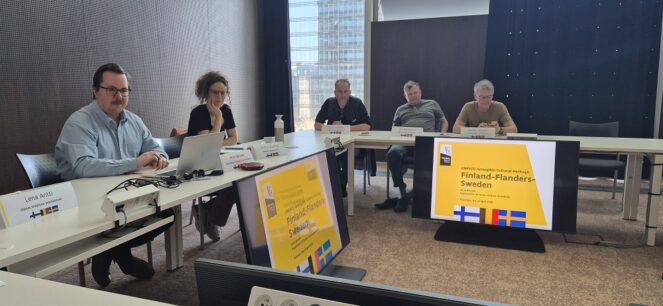
We presented our own UNESCO application, our application process, and our project. They admired our approach, in which the project actively supports the UNESCO nomination path. Our video about the tradition also received praise.
What did we learn?
Belgium is administratively very divided, with cultural boundaries existing even within a single country.
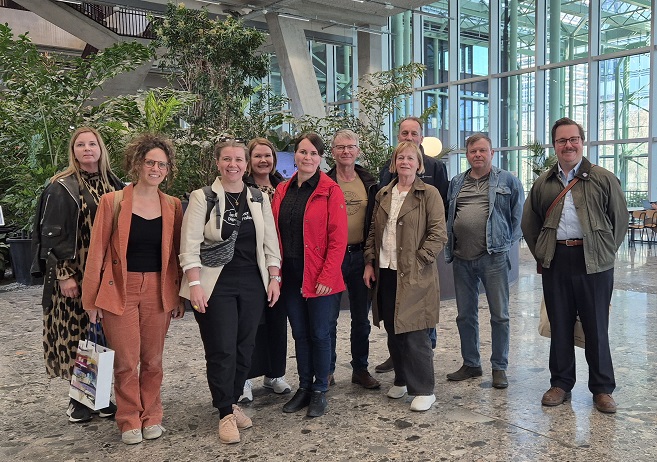
Report compiled by: Julia Autio, Cultural Heritage Coordinator; Merja Stenberg, Project Manager; Anu Lakkala, Project Coordinator
Study trip was funded by


